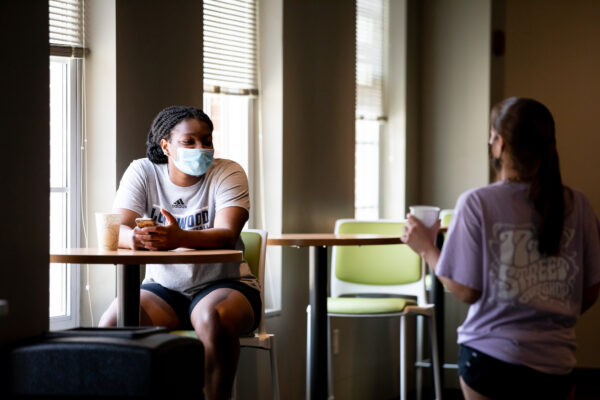By Quincy A. Bevely, Sherri Lind Hughes, and Nicholas V. Longo
Teaching in this time of uncertainty in response to COVID-19 has brought about many changes in how we engage with one another. For most of higher education, this has meant an abrupt mid-semester shift to online learning and the possibility of that continuing into the fall. Our experience teaching through the lens of diversity, equity, and inclusion—along with conversations with senior higher education leaders across the country—offers insights for academic programs striving for transformational learning while physically distancing.
Teaching during the pandemic is demonstrating that the challenges from COVID-19 go beyond the drastic health and economic consequences we are confronting—they are also social. In this time of crisis, educators have a responsibility to respond to the coming “social recession,” focusing on diversity, equity, and inclusion to ensure that physical distancing does not equate to social isolation and increased inequity. Our primary lesson is simple: in a time of physical distancing, social solidarity is more important than ever.
“In addition to social distancing,” Eric Klinenberg notes, “societies have often drawn on another resource to survive disasters and pandemics: social solidarity, or the interdependence between individuals and across groups.” Higher education should intentionally promote social solidarity to enhance learning and resilience among students, faculty, and staff.
For academic programs striving to integrate diversity and inclusion, this means we must now respond with a laser-like focus on teaching for social solidarity for all learners equitably. This cannot only happen in courses that explore diversity, equity, and inclusion in their content but must be part of the student experience in all courses—STEM, the fine arts and humanities, business, and the health professions.
An interdisciplinary core course two of us co-taught at Providence College—Dialogue, Inclusion, and Democracy (DID)—reflects experiences we’ve heard from colleagues across higher education. In the final in-person class session before spring break, a group of students led a story circle dialogue on mental health and well-being, asking participants to share stories about the stresses of mental health on their education. Many students grew emotional sharing their own struggles with isolation, anxiety, and depression, as well as stories of resilience, perseverance, and solidarity.
These tensions between isolation and solidarity would grow exponentially over the coming months, along with the deadly coronavirus.
Following spring break, the DID learning community, like so many others, moved remote via Zoom. These subsequent sessions were remarkable on some levels, including the continuation of (now virtual) check-ins and icebreakers that invited students to offer updates from their new reality of shelter-in-place. We heard gratefulness from many for time with family, along with creative efforts to learn new things. Students shared experiences filled with hopefulness and grace: a first Easter with a father who normally is stationed overseas in the military from one, attending class virtually while making food deliveries to elders in her community from another.
But the shift to online learning is not without real struggles. Students are feeling overwhelmed with deep levels of financial and social stress, and are also sometimes simply bored. They deeply crave meaningful community connections and are concerned about an uncertain future. They are missing both the structure of face-to-face learning and the opportunities for ad hoc interactions that happen in class, and they may be uncomfortable with what it means to learn in an online environment. Conversations tend to be more surface level than our face-to-face encounters, while inequity among learners is pervasive. Students from just this one class, for instance, were providing childcare for siblings; working as frontline workers; losing current and summer employment; caring for family members with COVID-19; and worrying about tuition payments as family members lose jobs and income. There are also more mundane but significant challenges with inequity in connectivity, spatial, and technological access as students share laptops with limited Wi-Fi in tight quarters.
Even with these challenges, student-led online conversations were meaningful in the DID course on issues such as social class, xenophobia, public policy, and patient care, now grounded in the experiences of learning in the midst of a pandemic. Several groups curated short videos—such as “I Stay Home” and “How We Are Staying Busy”—and one team produced public art representing life after quarantine. The course project, the development of “dialogue in action projects,” also moved completely virtual via Instagram (follow @pcdidwall) with dialogue framed around favorite activities during quarantine, encouragement for graduating seniors, and hopes for post-pandemic life.
From these teaching experiences, three critical areas for connecting diversity, equity, and inclusion with social solidarity emerged.
- We need to recognize and mitigate the inequity of resources for learners while they are at home and consider its consequences. As we mentioned, there is a greater need for equity as we adapt to online learning. Technological capability, financial security, and access to time and space can put students at an advantage or disadvantage. Leaders need to provide resources and support to those students, and faculty need to be sure that the students know how to get them. This will be particularly challenging as colleges and universities feel the financial impact of this crisis, but should be considered a mission-critical priority.
- We need to practice storytelling as an art that creates space for honoring diverse backgrounds and experiences, while recognizing the importance of inclusion of all voices. Storytelling allows us to move beyond barriers of equity and inclusion in remote learning for students by creating a climate where everyone participates and feels a sense of belonging. This includes sharing stories of mental and physical well-being. And while this may feel difficult or out of place in some disciplines, we are convinced that sharing and listening to each other’s stories can be a touchstone to learning math, science, or business as it enables students to connect and learn together.
- Culturally relevant pedagogical approaches can help bridge physical distance by affirming individual identities and knowledge, while using engaged teaching and learning techniques. This involves offering support and mentorship, and being honest about our own vulnerabilities and uncertainty. Culturally relevant teaching offers the ability to think more critically about the unique and diverse gifts of each learner through civic practices such as one-to-one virtual listening sessions, icebreakers, affirmations, and cultural sharing. Higher education leaders need to invest in providing tools and resources for faculty to undertake this work—especially for those who might be least comfortable or feel this is outside their academic expertise—through centers for teaching and learning and working closely with offices of diversity, equity, and inclusion.
Ultimately, effective teaching for social solidarity cannot be on the margins of the educational experience. Educators must be aware of issues of inequity, be cross-culturally agile, and employ culturally appropriate strategies to develop transformational learning. Like a commitment to diversity, equity, and inclusion, social solidarity must now be embedded in the core mission of academic programs across higher education.
If you have any questions or comments about this blog post, please contact us.



